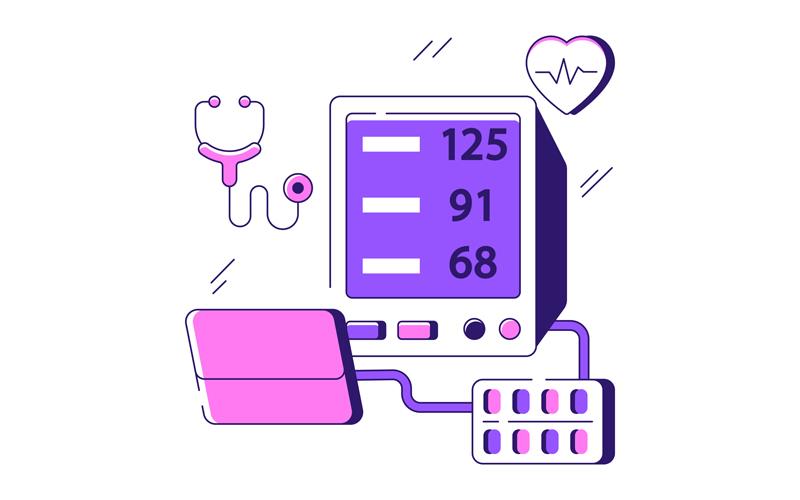Novel BPMs show promise for AF detection





Two novel blood pressure monitors (BPMs), which incorporate machine learning (ML) to detect atrial fibrillation (AF), demonstrate high accuracy in a recent study.
Both novel BPM/cuff combinations (Omron HEM-7371T1-AZ/cuff HEM-FL31 and HEM-7372T1-AZAZ/cuff HEM-RML31) showed high sensitivity (95.1 percent and 94.7 percent, respectively), specificity (98.6 percent and 98.3 percent), and accuracy (97 percent and 96.6 percent).
The comparator BPM (Microlife WatchBP Home A, BP3MX1-3) demonstrated comparable specificity (97.6 percent) but lower sensitivity (78.5 percent; p<0.0001 for comparisons with both novel devices), driving significantly lower diagnostic accuracy (88.4 percent; p<0.0001 for comparisons with both novel devices) for AF detection.
There was little variability across all subgroups for both novel devices, with sensitivity ranging between 93.3 percent and 100 percent and specificity between 97.3 percent and 99.3 percent. [Heart Rhythm 2024;21:2023-2027]
Importance of high sensitivity, specificity, accuracy
“Both high sensitivity and specificity are vital if a BPM is to be used for AF screening, and the novel BPMs used in this study meet that requirement,” the researchers noted.
According to the researchers, low sensitivity leads to underdetection and a missed opportunity for stroke prevention, while low specificity may lead to AF misdiagnosis, which, in turn, may result in negative emotional impact, needless subsequent healthcare costs, and unnecessary treatments with potential for harm.
“It is important to note that the ML algorithm (MLA) incorporated into the novel BPMs contributed to their high diagnostic accuracy,” said the researchers. “MLAs are a subset of artificial intelligence and have previously been shown to improve AF detection utilizing electrocardiogram (ECG).”
BPMs have an edge over other devices
The investigators used data from 559 individuals (mean age 64.9 years, 50.4 percent women) with and without AF. The AF cohort (n=267) consisted of individuals with a known history of AF who were in AF as confirmed by ECG at the time of enrolment. The non-AF cohort comprised individuals without a clinical history of AF and were not in AF at the time of enrolment (n=292).
“Early AF detection before stroke allows for anticoagulation, which is highly effective in reducing stroke risk. Early AF detection also makes long-term maintenance of sinus rhythm more feasible,” said the researchers.
The typical medical devices for AF detection in symptomatic patients include pacemakers, defibrillators, implantable loop recorders, externally applied heart monitors, in-office ECG, and in-hospital telemetry. This armamentarium has since evolved to include smartwatches, home ECG monitors, and home BPMs. “Of these devices, BPMs have great potential for population-based screening for AF because of their low cost, ease of use, and public availability,” they said.
Moreover, as BPMs are used in most clinics, one with an accurate AF detection rhythm can offer AF screening at no extra time or cost. “[Conversely,] ECG-based screening at home has its own unique challenges, with false-positive results due to baseline artifact from motion or poor connectivity, whereas measuring pulse-to-pulse intervals with BPMs does not have these limitations,” they explained.
Room for improvement
Despite the high accuracy observed with the novel BPMs, the investigators noted that there remains room for improvement, considering the false-positive results generated. “False-positive AF results predominantly occurred in the setting of marked sinus arrhythmia or frequent atrial and ventricular ectopy.”
They called for further studies to substantiate the performance of the novel BPMs for AF detection in both a general clinical population and an at-home setting, where AF prevalence would be much lower, and to ascertain their accuracy at higher ventricular rates, which typically occur when AF is first diagnosed.